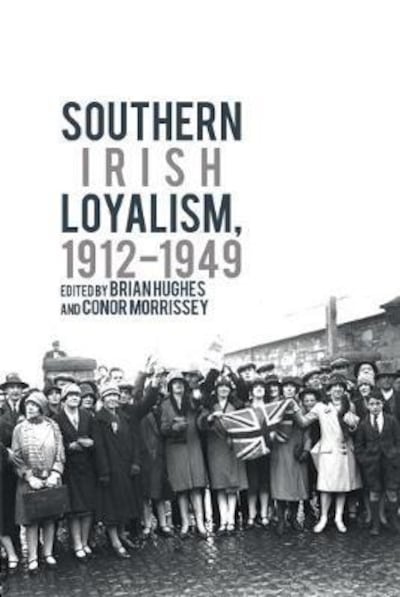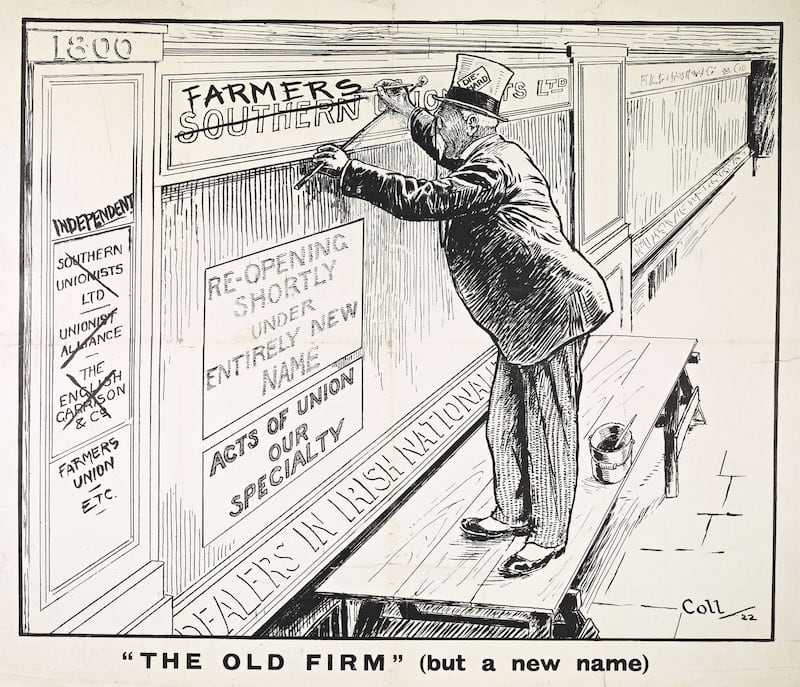
As midnight passed on Easter Sunday, April 18th, 1949, thousands of people gathered around O’Connell Bridge in Dublin to celebrate the declaration of an Irish republic. Two days later, The Irish Times, the traditional journal of southern loyalism, lamented withdrawal from the Commonwealth and counselled readers that “the milk has been spilled now, and we must accept things not as we might like them to be, but rather as they are”. It was “the duty of every citizen, whatever his or her personal views may be, to give unconditional loyalty to the new State”.
Taoiseach John A Costello’s announcement in September 1948 that his government would repeal the External Relations Act and proclaim a republic can thus be seen as a crucial moment – perhaps a final moment – of rupture for southern Irish loyalism; then still extant, if diminished.
Almost 30 years earlier, when the Anglo-Irish Treaty had been agreed and an Irish Free State was set to come into existence, The Irish Times’ view had been more or less the same. On December 10th, 1921, four days after it was signed, the paper’s editorial suggested that in accepting the Treaty it was the southern loyalists who were, “perhaps, surrendering most of all”.
“They have watched the passage, in mournful procession, of the host of laws, institutions, traditions, and ideals that bound them to Great Britain. They have embarked – not gladly, yet not afraid – on uncharted seas. They are entrusting themselves to the good-will of a majority from which, politically, they have suffered much, and with which in the past they have had little in common save love of Ireland. The Southern loyalists accept the Treaty because the country accepts it and invites their aid in making it a success.”
There was nothing to be done except recognise the new order, offer the state some useful service, and make the best of things. Southern Irish Loyalism, 1912-1949 brings together a group of scholars whose work examines the experiences of southern Irish loyalists from the “crisis and decline” of the revolutionary period (c.1912-1923) through the creation of the Irish Free State and beyond.
Our book considers loyalism in a minority context: in the 26 counties that were granted independence from British rule in 1922. But the term “southern Irish loyalism” is, of course, not without its problems. For one, it obscures the fact that Co Donegal contains the most northerly point on the island. It also potentially reinforces what Prof Paul Bew and others have decried as “partitionist history”, where administrative unity prior to 1921 is ignored and Ireland is viewed as two distinct entities before such a division actually emerged. We feel, however, that the benefits of our approach outweigh any disadvantages.
One benefit is that it allows us to highlight the many ways in which the experiences of loyalists in the south of Ireland differed markedly from their brethren in Ulster. During the 1918 general election, for example, unionist election strategies in Ulster had little impact in southern constituencies. Unionists only took one geographic constituency beyond Ulster – Rathmines in Dublin – along with the two seats for TCD.
Letters to the editor of this newspaper during 1918 voiced concern that the unionist leader Edward Carson (himself a Dubliner) was focussing too much on Ulster and neglecting the loyalists of the southern provinces.
The distinction between Ulster and “southern” also raises the issue of the unionists and loyalists from the “lost” counties of Ulster – Cavan, Monaghan and Donegal – who only became “southern” against their wishes. With the challenges facing border communities in light of Brexit very much in the public consciousness, there are parallels to be drawn with partition’s early discontented. Lord Farnham, for example, was horrified that his Cavan estate ended up in what he considered the disloyal south. Following a period of exile, however, he would return to Cavan and integrate relatively easily into life in the Free State.
Historians often use the term unionism when writing of Irish people who wanted to retain a link with Britain. We add to this a more expansive category, loyalism, which captures a larger group of individuals, those who showed allegiance or gave service to Britain, the crown or the empire. We can thus examine prominent political or public figures like Sir Maurice Dockrell, newspaper magnate Henry Lawrence Tivy or landowner Colonel John George Vaughan Hart alongside Protestant bishops, imperial servants, policemen, servicemen, and women engaged in war work and philanthropy.
If unionism can be understood as support for the union with Britain, loyalism can be applied in a broader sense. Firstly, there were individuals – mostly although not exclusively Protestant – who were ideologically committed to continued connection with the British Crown or Empire. Some known as the “die-hards” opposed any form of Irish self-government until the Anglo-Irish Treaty, or beyond. Another important group showed a strong preference for the Union, but they were pragmatic: by 1918 or before they understood that some form of Home Rule was inevitable. Our book also discusses long-neglected Catholic loyalists, many of whom were prominent in business, including Martin’s timber merchants and Power’s distillers.

Not all loyalists were unionists; indeed, some Home Rulers, in advocating a self-governing Ireland within the Empire, were engaged in a project which sought to preserve the connection with Britain. Sir John Keane, a prominent landlord from CoWaterford, combined a belief in Home Rule with strong loyalty to the crown and empire. Others are more challenging to define ideologically. These are servants of the crown – soldiers, policemen, civil servants and others – who acted in British interests both in Ireland and abroad.
Religion is less important here: Catholics served alongside Protestants in the armed forces, the Royal Irish Constabulary, in Dublin Castle and in the imperial service. Some of these individuals were motivated by feelings of allegiance to the crown or empire. Other Irish-born servants of the Crown would have rejected such labels and instead had nationalist, or even republican, leanings.
Irish Protestants and loyalists served in British uniform in the Great War alongside their nationalist fellow-countrymen. Loyalist women were also prominent in their contributions to the war effort from the home front. Men and women from the 26 counties continued to serve with the British armed forces after independence, while others chose (or continued) a career administering the empire in the British colonial service.
Local studies of the Irish revolution repeatedly emphasise the regionality of the conflict, and there is no doubt the southern loyalist experience varied between the regions. Although some experiences were shared, unionists and loyalists in rural Waterford did not necessarily witness the same revolution as those in a garrison county like Kildare. West Cork has drawn very significant attention from historians of the revolution, and here again there were often stark differences with other counties.
During times of crisis, Protestants looked to the church hierarchy for leadership. Church of Ireland bishops offered a range of responses, from calls for calm and reconciliation, to pronounced fears about the safety of their congregations, or references to laity killed or forced to flee. Indeed, given the close association between Protestantism and loyalism, one of the issues addressed in this book is the pronounced numerical decline in the Protestant population of the 26 counties between 1911 and 1926. The real terms figure – a drop of about one third – is not in doubt. Explaining it has proven more challenging. This book makes its own contribution to a debate that will no doubt continue. Definitive conclusions about Catholic loyalist migration may remain even more elusive.
This is much more, however, than a simple tale of woe; there was no singular experience of revolution or independence. More loyalists chose to remain in the country than leave. Many of the worst predictions of the southern loyalist business community – which included both Protestant and Catholic families – did not come to pass. Unionists and loyalists in the Free State proved able to accommodate themselves to their new circumstances. During the Emergency, southern Protestants could support the British war effort and the State’s policy of neutrality at the same time – even after putting themselves forward to serve. Being an ex-unionist did not necessarily mean they were an ex-loyalist.
More remains to be said about southern Irish loyalism. There is scope for further research on the afterlives of Catholic loyalists in the Irish Free State, and for work that takes the transnational and comparative approaches that have proved so enlightening in other aspects of modern Irish history. As the first book devoted specifically to this particular Irish minority in over 20 years, Southern Irish Loyalism, 1912-1949 will prove, we hope, a useful starting point.
Brian Hughes is Lecturer in the Department of History, Mary Immaculate College, Limerick, and Conor Morrissey is Lecturer in Irish/British History at King's College London.










